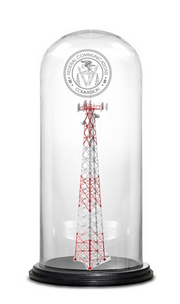By Leslie Stimson, Inside Towers Washington Bureau Chief
As the COVID pandemic closed the nation, the FCC worked to ensure Americans’ phone and internet connectivity were not cut off. FCC Chairman Ajit Pai asked carriers to sign a pledge assuring customers they’d give them price breaks and relax billing through at least June. Many of the several hundred telecoms that signed the pledge continued to adhere to its tenants for several months later.
The U.S. Department of Homeland Security provided letters that NATE: The Communications Infrastructure Contractors Association, could send its members to clarify their status as essential workers. The intent of the letters was to aid engineers and technicians getting to infrastructure (for example: towers and generators) to keep the communications infrastructure operational during a crisis. The permission ended in May. Members could apply for new letters in December.
The Wireless Infrastructure Association was awarded a grant to expand apprenticeships in the telecommunications industry in partnership with the Power & Communications Contractors Association (PCCA) in February. The nearly $6 million grant is supplemented by over $9 million in matching support from industry, including cash and in-kind contributions from WIA, PCCA, and participating employers, for a total commitment to apprenticeship of $15 million in a public-private partnership.
The FCC continued to clear roadblocks to 5G deployment. The agency passed a 5G upgrade order in June based in part on a request from WIA. It included a declaratory ruling and notice of proposed rulemaking that eliminates siting delays, promotes co-location, and accelerates wireless network builds by clarifying rules for upgrading equipment on existing infrastructure. In October, the FCC further streamlined wireless infrastructure deployment by specifying that modifications to existing tower compounds involving limited site expansion can proceed without unnecessary and potentially extensive and costly reviews.
The broadcast repack was completed in July. By the third of that month, the FCC said more than 99 percent of the 987 repacked TV stations left their former channels. Up to 15 percent of repacked broadcasters were operating on interim facilities over the summer. Pai said the agency would assist those broadcasters in their move to their permanent facilities.
The Commission moved to protect communications networks from security threats. That included banning Universal Service Fund recipients from using USF money to buy equipment and technology from China’s Huawei and ZTE. The agency also voted in December to subsidize small carriers’ efforts to rip out and replace any gear in their networks from Huawei and ZTE. Congress acted to fund the effort in December.
Spectrum auctions for wireless use were big in 2020. The FCC’s Auction 105 for the “experimental” Citizens Broadband Radio Service band ended in August, netting the U.S. Treasury $4,543,232,339. A total of 228 bidders won 20,625 of the available 22,631 Priority Access Licenses.
The top 10 winners in the Rural Digital Opportunity Fund (RDOF) Phase 1 auction will take home just over three quarters (76 percent) of the total $9.2 billion in funding awarded through the auction. This auction was structured differently than previous FCC auctions. The auction used a multi-round, descending clock auction format. Bidders under that format indicated in each round whether they would commit to provide service to an area at a given performance tier and latency at the current round’s support amount. The auction was technologically neutral and open to new providers, and bidding procedures prioritized bids for higher speeds and lower latency.
The auction of lower C-band spectrum was underway in December and scheduled to continue into January. The Commission is making available 280 MHz of mid-band spectrum in the 3.7-3.98 GHz band.
To round out the year, in December, the U.S. Department of Labor’s Occupational Safety and Health Administration signed a national strategic partnership with NATE and the FCC to improve worker safety in the communications tower erection industry. The goal of the three-year partnership is to eliminate worker injuries and fatalities while performing wireless and telecommunications, tower erection and maintenance operations. The partnership will address some of the industry’s frequently encountered hazards, including falls from height, electric, falling objects, tower collapses, and inclement weather.





Reader Interactions